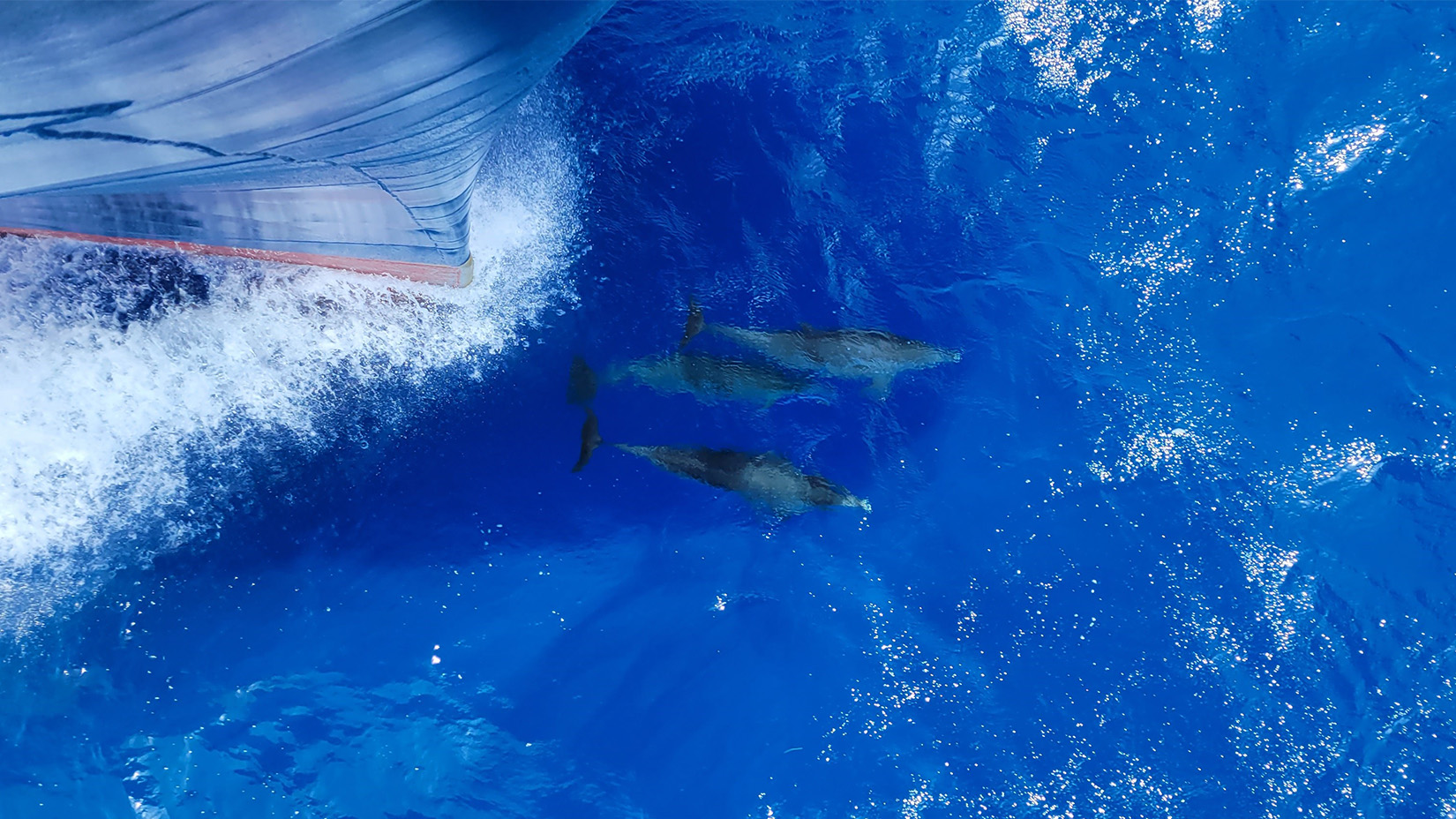Leg 1: headed to an unexplored area of the Puerto Rico Trench

Editor’s note
JCVI Staff Scientist Erin Garza, Ph.D., was selected to embark on a unique research expedition aboard the HOV Alvin submersible, a crewed deep-ocean research vessel owned by the United States Navy and operated by the Woods Hole Oceanographic Institution, that has brought explorers to extraordinary places for more than 50 years.
During the deep-sea expedition, she will be collecting plastic samples from the bottom of the ocean and analyzing them using scanning electron microscopy (SEM), metagenomics, and metatransciptomics to learn about potential microbial plastic degradation. These techniques will enable the identification of organisms that are present and what genes the organisms are actively expressing. These data will help provide an indication as to what metabolic pathways may be breaking down the plastic with the eventual goal of engineering microbes to safely and efficiently degrade plastics at large scale recycling facilities.
This is my first time at sea, and I don’t know what to expect. So far everything is exciting, from the dolphins swimming in the ship’s wake as we transit to our first diving location in the Puerto Rico Trench, to watching the Alvin crew making last minute tweaks to the submersible.
We want to get as many dives in as possible, which means that we will be starting with scientific dives on day 2 of our expedition. While we all have our own individual science objectives, we must remember that the main purpose of the cruise is Alvin verification. Each dive will consist of a list of tasks that must be completed to test different systems in the Alvin at depth (lighting, navigation, communication, etc.). With these completed the two scientists or “observers” onboard are then free to explore and collect samples.
I’m blown away. I can’t believe that I am going to be diving in a previously unexplored portion of the Puerto Rico Trench.
However, the observers must be on the lookout for samples for the entire science party. No easy feat when everyone is looking for something different. This cruise is somewhat unique in that scientists from all different disciplines are participating, which makes for a widely varied sample sheet. For instance, some of the samples to be collected include water from different depths, sediment cores, rocks, fish, vent chimneys, isopods, coral and sponges, plastic debris, microbial mats, sea cucumbers, shrimp, biofilms, seep and plume fluid, and anything weird or out of the ordinary.
The Puerto Rico Trench contains some of the deepest locations in the Atlantic, perfect for testing out the sub’s new depth rating. You can feel everyone is anxious to get into the sub because for many of us this will be our first dive. Even for seasoned divers they say the thrill never goes away. I’ve been told that I will be on science dive 2. I’m blown away. I can’t believe that I am going to be diving in a previously unexplored portion of the Puerto Rico Trench.
We have no idea what we will find or see there. I need to prepare. Due to safety restrictions, we are limited as to what we can bring in the sub, no synthetic fabrics because they are highly flammable, no electronics that haven’t been tested for off-gassing, nothing scented because you are in a small airtight space, no greasy or oily snack foods.
Ultimately, I end up with a clipboard containing my objectives and notepaper, a pen, my glasses, and a set of sweats because it is cold at the bottom of the ocean. When I was little, envisioning myself exploring the great unknown, I never imagined that this is what I would be armed with, but here I am ready to conquer the deep with my clipboard and sweatsuit.